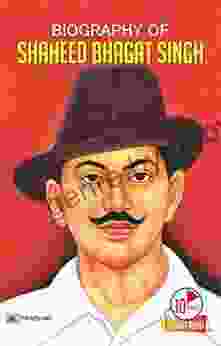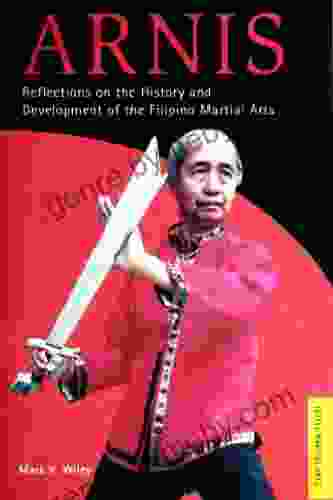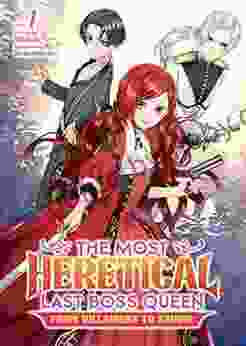Reflections On The History And Development Of Filipino Martial Arts

4.5 out of 5
| Language | : | English |
| File size | : | 1254 KB |
| Text-to-Speech | : | Enabled |
| Screen Reader | : | Supported |
| Enhanced typesetting | : | Enabled |
| Print length | : | 202 pages |
The history of Filipino martial arts is a rich and complex one, dating back centuries. Filipino martial arts are a diverse group of combat systems that have been developed over time in the Philippines. They are characterized by their use of weapons, such as sticks, knives, and bladed weapons, as well as hand-to-hand combat techniques.
The earliest evidence of Filipino martial arts can be found in the archaeological record, which shows that the people of the Philippines were using weapons and fighting techniques as early as the 10th century AD. These early weapons and techniques were likely used for self-defense and warfare.
Over time, Filipino martial arts continued to develop and evolve, influenced by the different cultures that came into contact with the Philippines. These influences include Chinese, Malay, Indian, and Spanish. As a result, Filipino martial arts are a unique blend of different fighting styles and techniques.
Today, Filipino martial arts are practiced all over the world. They are used for self-defense, law enforcement, and military training. Filipino martial arts are also a popular form of recreation and sport.
The Different Styles Of Filipino Martial Arts
There are many different styles of Filipino martial arts, each with its own unique characteristics. Some of the most popular styles include:
- Eskrima: Eskrima is a weapon-based martial art that uses sticks, knives, and bladed weapons. It is characterized by its fast and fluid movements.
- Kali: Kali is a more aggressive and direct form of eskrima that is used for self-defense. It is characterized by its use of short, powerful strikes.
- Arnis: Arnis is a more traditional form of Filipino martial arts that is used for both self-defense and warfare. It is characterized by its use of long sticks and bladed weapons.
In addition to these three main styles, there are also many other lesser-known styles of Filipino martial arts. Each style has its own unique history, techniques, and practitioners.
The Cultural Significance Of Filipino Martial Arts
Filipino martial arts are more than just a form of combat. They are also a reflection of the culture of the Philippines. Filipino martial arts are taught as a way to pass on the values of discipline, respect, and courage. They are also used to promote physical fitness and self-confidence.
Filipino martial arts are a source of pride for the Filipino people. They are a reminder of the country's rich history and culture. Filipino martial arts are also a way for Filipinos to connect with their heritage and to learn about the traditions of their ancestors.
The Future Of Filipino Martial Arts
The future of Filipino martial arts is bright. Filipino martial arts are becoming increasingly popular all over the world, as more and more people are discovering the benefits of these unique combat systems. Filipino martial arts are also being used in new and innovative ways, such as for fitness training, self-defense, and law enforcement.
The future of Filipino martial arts is in the hands of the next generation of practitioners. It is up to them to continue the tradition of Filipino martial arts and to pass on the values and techniques to future generations.
Filipino martial arts are a rich and diverse group of combat systems that have been developed over time in the Philippines. They are characterized by their use of weapons, such as sticks, knives, and bladed weapons, as well as hand-to-hand combat techniques. Filipino martial arts are more than just a form of combat. They are also a reflection of the culture of the Philippines. Filipino martial arts are taught as a way to pass on the values of discipline, respect, and courage. They are also used to promote physical fitness and self-confidence. The future of Filipino martial arts is bright. Filipino martial arts are becoming increasingly popular all over the world, as more and more people are discovering the benefits of these unique combat systems.
4.5 out of 5
| Language | : | English |
| File size | : | 1254 KB |
| Text-to-Speech | : | Enabled |
| Screen Reader | : | Supported |
| Enhanced typesetting | : | Enabled |
| Print length | : | 202 pages |
Do you want to contribute by writing guest posts on this blog?
Please contact us and send us a resume of previous articles that you have written.
 Book
Book Novel
Novel Page
Page Chapter
Chapter Text
Text Story
Story Genre
Genre Reader
Reader Library
Library Paperback
Paperback E-book
E-book Magazine
Magazine Newspaper
Newspaper Paragraph
Paragraph Sentence
Sentence Bookmark
Bookmark Shelf
Shelf Glossary
Glossary Bibliography
Bibliography Foreword
Foreword Preface
Preface Synopsis
Synopsis Annotation
Annotation Footnote
Footnote Manuscript
Manuscript Scroll
Scroll Codex
Codex Tome
Tome Bestseller
Bestseller Classics
Classics Library card
Library card Narrative
Narrative Biography
Biography Autobiography
Autobiography Memoir
Memoir Reference
Reference Encyclopedia
Encyclopedia Susan Alexander Yates
Susan Alexander Yates Whitney Nelson
Whitney Nelson Winston Groom
Winston Groom Kurt Timmermeister
Kurt Timmermeister Stacey Matthews
Stacey Matthews Ramon Henson
Ramon Henson Dick Jackson
Dick Jackson Lois Rock
Lois Rock Steve Hilker
Steve Hilker Sarah Bennett
Sarah Bennett Scott Baker
Scott Baker S W Stirling
S W Stirling Stephen E Ambrose
Stephen E Ambrose Roman Mars
Roman Mars Kristi Carlson
Kristi Carlson Ron Rhodes
Ron Rhodes Roger Ebert
Roger Ebert Sara Gaviria
Sara Gaviria Shanlynn Walker
Shanlynn Walker Pradeepa Narayanaswamy
Pradeepa Narayanaswamy
Light bulbAdvertise smarter! Our strategic ad space ensures maximum exposure. Reserve your spot today!

 Dylan MitchellBiography Of Shaheed Bhagat Singh: The Life And Legacy Of A Revolutionary...
Dylan MitchellBiography Of Shaheed Bhagat Singh: The Life And Legacy Of A Revolutionary... David Foster WallaceFollow ·12.4k
David Foster WallaceFollow ·12.4k Jerry WardFollow ·11.4k
Jerry WardFollow ·11.4k John ParkerFollow ·11.4k
John ParkerFollow ·11.4k Jonathan FranzenFollow ·8.9k
Jonathan FranzenFollow ·8.9k Brandon CoxFollow ·8.8k
Brandon CoxFollow ·8.8k Easton PowellFollow ·5.7k
Easton PowellFollow ·5.7k Andres CarterFollow ·2.2k
Andres CarterFollow ·2.2k Kenneth ParkerFollow ·3.8k
Kenneth ParkerFollow ·3.8k

 Lee Simmons
Lee SimmonsUnveiling the Enchanting Emerald Isle: A Literary Journey...
A Tapestry of Breathtaking...

 Thomas Hardy
Thomas HardyUnveiling Costa Rica's Enchanting Essence with Lonely...
Embark on an Unforgettable Costa Rican...
 Bryan Gray
Bryan GrayLifting the Veil of Sorrow: A Beacon of Hope for Widowers
Embrace Healing and Find Solace in the...

 John Updike
John UpdikeGrow Your Business and Legacy: An Inspiring Guide for...
Growing Up In The Family Business is an...

 Harrison Blair
Harrison BlairLonely Planet's Western Europe Travel Guide: Your...
Are you planning an unforgettable...
4.5 out of 5
| Language | : | English |
| File size | : | 1254 KB |
| Text-to-Speech | : | Enabled |
| Screen Reader | : | Supported |
| Enhanced typesetting | : | Enabled |
| Print length | : | 202 pages |












